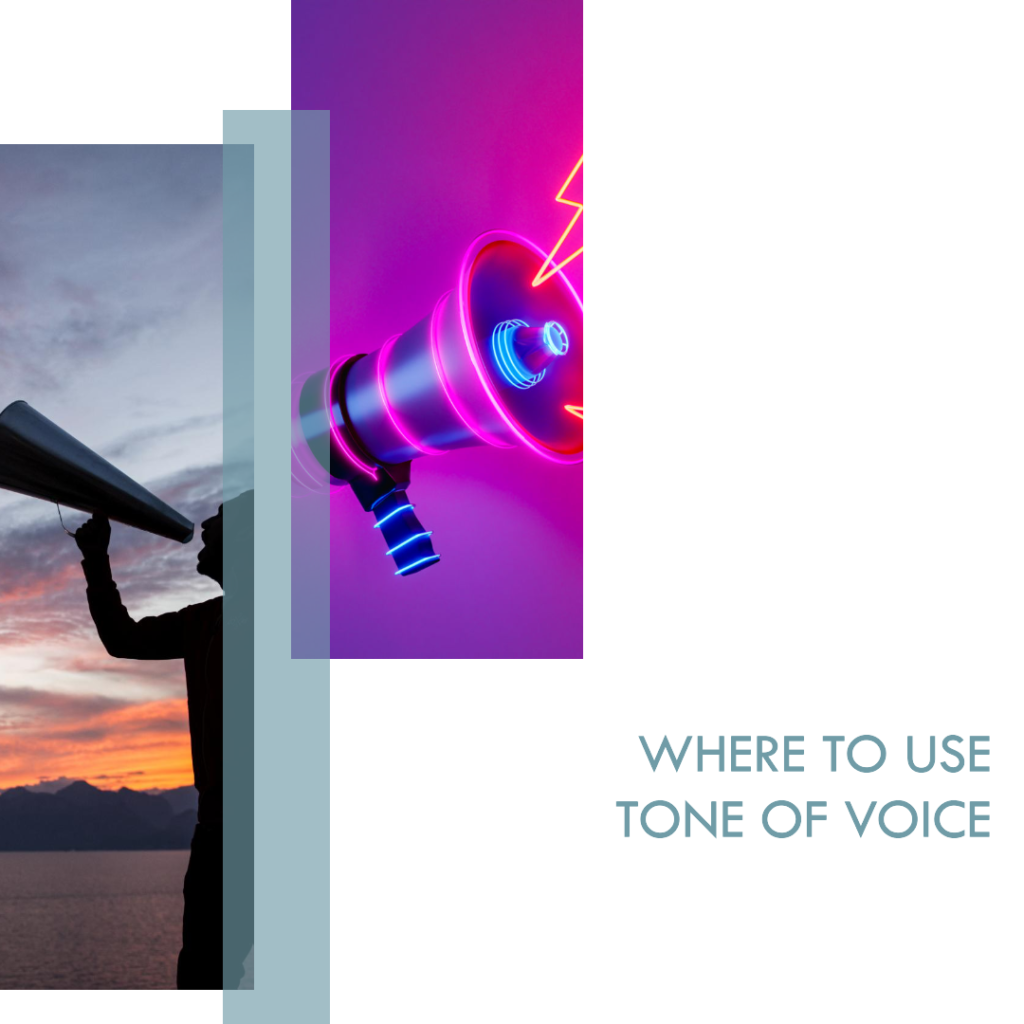What is Tone of Voice?
The tone of voice is how words are spoken or written, conveying the attitude, emotion, and personality behind the message. How you say it matters, your tone shapes perceptions, evokes emotions, and influences behaviour.

- What is Tone of Voice?
- Introduction
- Elements of Tone of Voice
- Tips for Tone of Voice Improvement
- Why Does Tone of Voice Matter?
- How to Develop Your Tone of Voice
- Where to Use Tone of Voice
- When to Use Different Tones of Voice
- The Challenges Ahead
- Examples of Tone of Voice Done Right
- Conclusion on Tone of Voice
Introduction
Tone of voice is essential for effective communication. Whether you are a budding writer, a seasoned marketer, or simply someone looking to improve your communication skills, understanding and harnessing the power of tone takes you a long way.
In this comprehensive guide, we will focus on what the tone of voice is, why it matters, and how you can use it effectively to connect with your audience.
Elements of Tone of Voice
Various essential elements make up your tone of voice. Having them at your fingertips significantly upgrades your communication skills.
Pitch
- Definition: Pitch refers to the highness or lowness of your voice.
- Impact: It can convey emotions such as friendliness, authority, or seriousness.
- Example: Speaking in a higher pitch expresses enthusiasm, while a lower pitch might indicate confidence or seriousness.
Volume
- Definition: Volume relates to how loud or soft your voice is when speaking.
- Impact: It conveys emotions like confidence, intimacy, or urgency.
- Example: Speaking softly creates a sense of closeness while speaking loudly commands attention.
Pace
- Definition: Pace is about the speed at which you speak.
- Impact: It sends emotions like excitement, calmness, or urgency.
- Example: Speaking quickly shows enthusiasm or energy, while a slower pace indicates thoughtfulness.
Word Choice
- Definition: Word choice refers to the specific words you use in your communication.
- Impact: It reflects your personality and shapes how your message is perceived.
- Example: Using informal language creates a relaxed tone, while technical terms may sound more professional.
Sentence Structure
- Definition: Sentence structure is about how you arrange and construct your sentences.
- Impact: It affects the clarity and readability of your message.
- Example: Short, straightforward sentences make your message easy to understand.
Tips for Tone of Voice Improvement

- Know Your Audience: Understand who you’re speaking to and tailor your tone accordingly.
- Be Authentic: Let your personality shine in your words.
- Practice Consistency: Attest your tone remains consistent across different platforms.
- Seek Feedback: Listen to how others perceive your tone and adjust accordingly.
Knowing the elements of tone of voice is pivotal for effective communication as it helps improve your relationships, strengthen your brand, and become a more effective communicator.
Why Does Tone of Voice Matter?
Your tone of voice is a powerful tool for building relationships, establishing trust, and making a lasting impression. Here is why it is so important:
- Brand Identity: Your tone of voice is a primary component of your brand identity, helping to differentiate you from competitors and forge a memorable presence in the minds of your audience.
- Engagement: A relatable and authentic tone of voice can fascinate your audience, encouraging them to enchant with your content and take action.
- Trust: A consistent tone of voice fosters trust and loyalty, as it conveys reliability and sincerity.
- Emotional Connection: Using the right tone taps into your audience’s emotions, creating a deeper connection and fostering empathy.
How to Develop Your Tone of Voice
Drafting a distinctive tone of voice that echoes with your audience requires careful consideration and consistency. Following the guidelines provided will enable you to achieve your goal.
- Know Your Audience: Understand who your audience is, what they care about, and how they communicate. Tailor your tone to reverberate with their preferences and values.
- Define Your Brand Personality: Identify the basic traits and values that define your brand’s personality. Is your brand playful and irreverent, or professional and authoritative? Let your personality shine in your tone.
- Be Authentic: Authenticity is vital to building trust and credibility. Stay true to your brand’s values and voice and avoid trying to mimic others.
- Consider Context: Adapt your tone to suit the context in which you’re communicating. A casual tone may be appropriate for social media posts, while a more formal tone may be better suited to business communications.
- Use Language Wisely: Pay attention to the words you use and how you use them. Choose language that aligns with your brand personality and relates with your audience.
Where to Use Tone of Voice

Understanding the tone of voice is fundamental for your business. Whether you’re writing content for a website, composing social media posts, or interacting with customers on emails, getting your tone right makes all the difference. Knowing where and how to use tone of voice:
On Your Website
Your website is often the first point of contact for potential customers, so it’s necessary to establish the right tone of voice. Here’s how:
- Homepage: Create a welcoming and engaging tone to make visitors feel at home.
- About Us Page: Inject personality into your brand by sharing your story in a conversational tone.
- Product Descriptions: Use a tone that matches your brand identity to showcase your products or services effectively.
- FAQ Section: Keep the tone helpful and informative to address common queries in a friendly manner.
Social Media Platforms
Social media is all about connection and engagement. Your tone of voice helps you stand out and connect with your clients. Here’s how:
- Facebook: Keep your tone casual and conversational to encourage interaction and sharing.
- Twitter: Get straight to the point with a concise and friendly tone, using humour where appropriate.
- Instagram: Use a visual tone that correlates with your images and captions, reflecting your brand’s aesthetic.
- LinkedIn: Maintain a professional yet approachable tone to establish credibility and foster meaningful connections.
Emails remain a vital tool for business communication. Your tone of voice influences how your message is received.
- Subject Lines: Grab attention with clear and compelling subject lines that set the tone for your email.
- Greetings: Personalise your greetings to make recipients feel valued and respected.
- Body Content: Tailor your tone to match the purpose of the email, whether it’s informative, persuasive, or empathetic.
- Signatures: Sign off with a friendly and professional tone that leaves a positive impression.
Customer Service
Effective customer service goes beyond resolving issues; it’s about building relationships. Your tone of voice makes interactions memorable for all the right reasons.
- Phone Calls: Maintain a warm and helpful tone to reassure customers and address their concerns.
- Live Chat: Keep responses prompt and friendly to provide real-time assistance and support.
- Email Responses: Respond promptly and with empathy, addressing customers’ concerns in a reassuring tone.
- Social Media Engagement: Attract customers on social media platforms promptly and courteously, resolving issues and answering queries with a helpful tone.
Beating the tone of voice is integral across various communication channels to connect with your readers effectively.
Website, social media, emails, or customer service interactions, adopting the right tone promotes engagement, builds trust, and strengthens your brand identity.
When to Use Different Tones of Voice

Not all tone of voice is created equal! We need to use different tones for different situations. The way you express yourself will make or break your business.
Professional Tone
- Emails to clients or colleagues
- Business reports and presentations
- Official announcements or press releases
Friendly Tone
- Social media posts
- Customer service interactions
- Informal emails to acquaintances or colleagues
Authoritative Tone
- Giving instructions or directives
- Presenting expert opinions or advice
- Crisis management communications
Empathetic Tone
- Offering support or condolences
- Dealing with customer complaints or grievances
- Providing feedback or constructive criticism
The Challenges Ahead

Challenges are inevitable in using the tone of voice for effective communication. There are different ways of tackling the tricky part – the challenges you might face when trying to nail your tone of voice.
Consistency with Tone of Voice
- Keeping your tone consistent across different platforms and content types can be tough.
- Balancing professionalism with friendliness, especially in business communication, can be a tightrope walk.
- Avoiding mixed signals – your tone should always align with your brand’s values and identity.
Understand Your Audience
- Different audiences may respond differently to the same tone.
- Cultural differences can also play a significant role in how your tone is perceived.
- Tailoring your tone to suit your audience without losing your authenticity can be a fine art.
Avoid Misinterpretation
- Tone doesn’t always translate well in written form, leading to potential misunderstandings.
- Sarcasm and humour, in particular, are risky as they rely heavily on context and tone of voice.
- Using clear language and providing context helps minimise misinterpretations.
Develop a Style Guide for your Tone of Voice
- Create a comprehensive style guide outlining your brand’s tone of voice, complete with examples.
- Refer back to your style guide regularly to ensure consistency across all your communications.
Conduct Audience Research
- Take the time to understand your audience’s preferences, demographics, and cultural backgrounds.
- Use surveys, social media insights, and customer feedback to gather valuable insights.
Test and Iterate
- Don’t be afraid to experiment with different tones and gather feedback from your audience.
- Continuously refine and iterate your tone based on what resonates best with your audience.
Use Clear Language
- Keep your language simple and concise to minimise the risk of misinterpretation.
- Avoid jargon and overly complex sentences, especially when communicating with a broad audience.
Grasping the art of tone of voice significantly betters your communication skills, enabling you to connect more effectively with your audience.
Examples of Tone of Voice Done Right

A host of brands have nailed their tone of voice:
- Innocent Drinks: With its playful and witty tone, Innocent Drinks has built a loyal following of fans who love its quirky brand personality.
- Nike: Nike’s empowering and motivational tone inspires its audience to push their limits and strive for greatness.
- Mailchimp: Mailchimp’s friendly and conversational tone makes even the most complex topics seem approachable and easy to understand.
Conclusion on Tone of Voice
Mastering tone of voice is an imperative skill for any business looking to build meaningful connections with their audience.
The importance of tone, defining your brand personality, and staying true to your authentic self creates a voice that echoes with your readers and potential customers.
We hope this article helped you learn about Tone of Voice. You may also want to see our guide on How to create content style guide for your business and brand.
If you liked this article, then please subscribe to our YouTube Channel for video tutorials and more. You can also find us on LinkedIn, Twitter and Pinterest.




